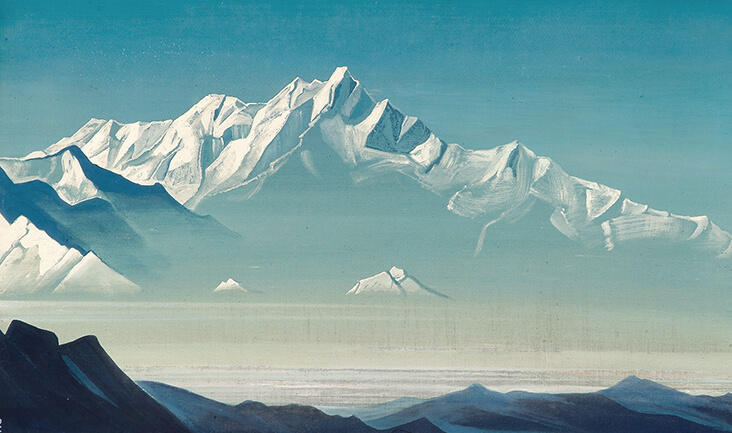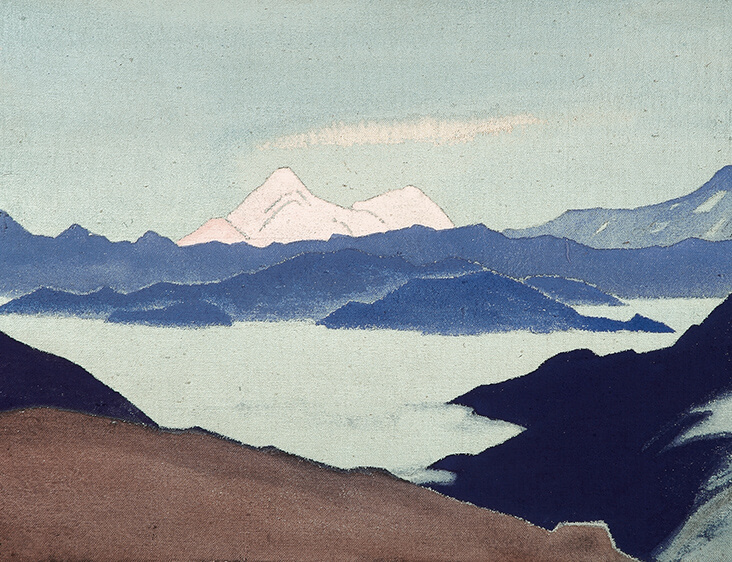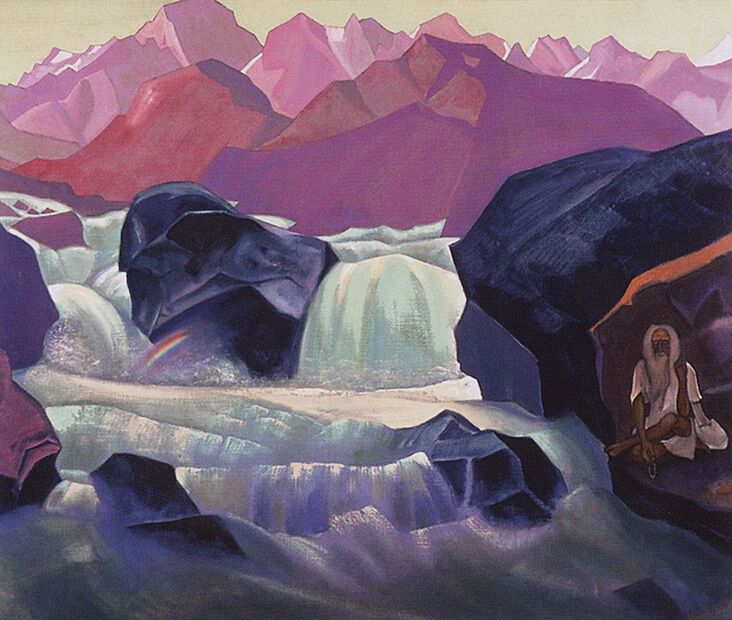FS Colour Series: Tourmaline Inspired by Nicholas Roerich’s Crisp, Freezing Air
Tourmaline’s frosty shade of pale turquoise became winter skies, icy water and crystalline, snow peaked mountain tops in the hands of Russian-born painter Nicholas Roerich. A spiritual nomad and intrepid explorer, Roerich spent much of his adult life exploring some of the farthest unchartered reaches of the world, most notably the treacherous terrain of the Himalayas. The adventures he took part in became the backbone to his art, which illustrated vast, dreamy mountain ranges reaching toward the heavens, acting as a bridge between the physical world and unseen spiritual realms.
Roerich was born in Russia in 1874, and trained as an artist in St Petersburg, alongside legal studies. From early in his artistic career Roerich expressed a fascination with religious, historical and geological subjects. One of his earliest and most successful series of paintings was based on the ruined church buildings he encountered while travelling across the entirety of Russia as a young man. Years later, Roerich became an outspoken advocate for the preservation of historical buildings that held religious, cultural and historical significance. Over the years that followed Roerich developed greater interests in wider religions from East and West, as well as the emergent school of Theosophy.
In 1923 Roerich embarked on his greatest adventure yet, a tour of the Himalayan Mountain ranges. His numerous journeys through the freezing, snow-peaked mountain tops were treacherous, arduous and sometimes painfully difficult, but Roerich likened his journeys to the challenges any human being experiences when facing a spiritually enlightened journey. On the back of his Himalayan experiences Roerich became immensely prolific, producing around 700 paintings of epic mountains reaching up towards the crisp, clear blue sky. Sometimes the mountains appear to float above the ground, as if hovering in the sky like the farthest reaches of heaven. Roerich often included significant religious figures in his mountainous scenes, who appear on solitary journeys into an unknown terrain.
In the Two Worlds, 1933, Roerich paints the Himalayas as dreamy, mystical and otherworldly, as if floating high above ground level. Pale, crisp shades of turquoise breeze through the scene suggesting the icy, artic air that hovered around Roerich on his epic adventures. Made in the same year, Roerich’s painting Sacred Himalayas, 1933, keeps the mountains at ground level, while freezing turquoise blues fill the sky and water above and below with clear, cold, luminescent light, suggesting the transcendental feelings Roerich experienced so far from civilization.
In Tibet, Himalayas, 1933, Roerich includes a small smattering of snow-covered structures within the craggy and inaccessible mountain ranges of the Himalayas, pointing towards signs of life within the vast and inhospitable wilderness. Cold turquoise blues are scattered throughout the isolated scene, alongside white, pale blue, and the subtle faun shade of the barely visible buildings. Nicknamed the ‘roof of the world’, the Tibetan mountains are known for their towering peaks that reach high into the sky – for Roerich these lofty mountaintops became a potent metaphor for the spiritual afterlife. Roerich was so profoundly moved by his experiences in the mountain ranges that he chose to settle with his family in the Kullu Valley of the Himalayan foothills, where he continued to carry out artistic and geological research into the Himalayas.
In the later painting Santana, 1937, Roerich paints the Himalayan mountains as seen from a lower perspective, as an ice-cold river gushes onto the rocks. Here the mountain ranges seem to glow with an incandescent, warm purple light, contrasting sharply with the pale blue water springing forth within them. Hidden deep in the rocks is a sole spiritual figure, whose solitary, transcendental experience is reflected by the smallest chink of rainbow, just visible within the folds of water at his eye level.
























































Leave a comment